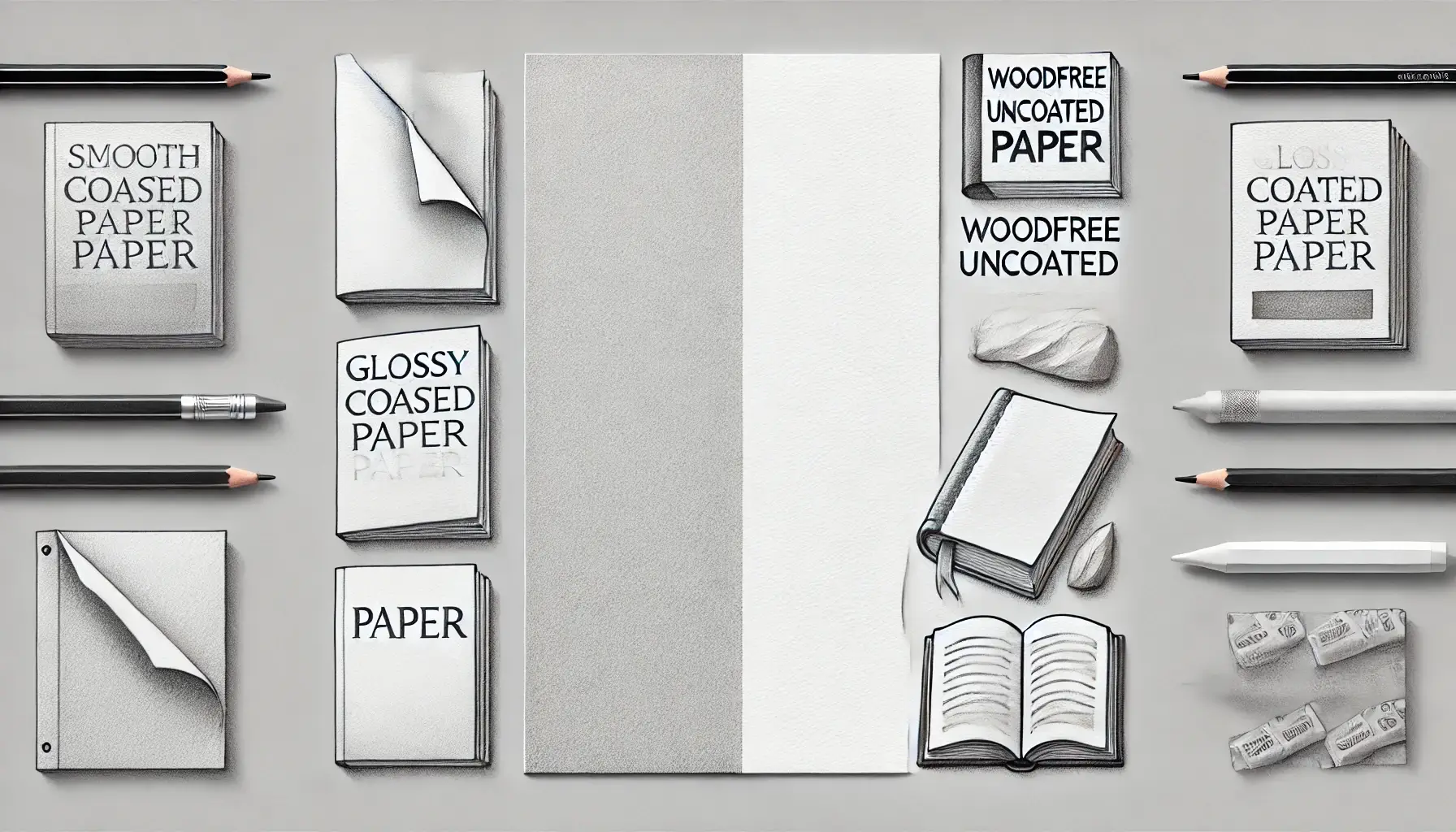In digital printing, paper quality plays a crucial role in delivering high-end results. Two popular options are coated and woodfree paper, each suited for different purposes based on their characteristics.
Coated Paper
Coated paper features a layer of coating, typically made from materials like clay or polymers, giving it a smooth, polished finish. This coating can be glossy, matte, or satin, and it enhances the paper’s ability to produce vivid colors and sharp images. The smooth surface prevents excessive ink absorption, resulting in crisp details, making it ideal for marketing materials such as brochures, flyers, and posters. Coated paper is also more resistant to wear, tear, and moisture, which enhances its durability in applications where the printed product will be handled frequently.
Woodfree Paper
Contrary to what the name might suggest, woodfree paper is not actually free of wood. Instead, it refers to paper that is made using a chemical process that removes lignin (a wood component) from the pulp. This process results in a higher-quality, non-yellowing paper. Woodfree paper is typically uncoated, which gives it a natural, textured feel and makes it more absorbent. This type of paper is excellent for documents, stationery, and books where a softer, more tactile surface is preferred, and bright, high-contrast images aren’t a priority.
Choosing the Right Paper
The decision between coated and woodfree paper depends on the desired result. Coated paper offers better image quality and durability, making it suitable for visual-heavy projects. Woodfree paper, on the other hand, is perfect for everyday prints or text-based materials where a more natural look and feel are needed.
